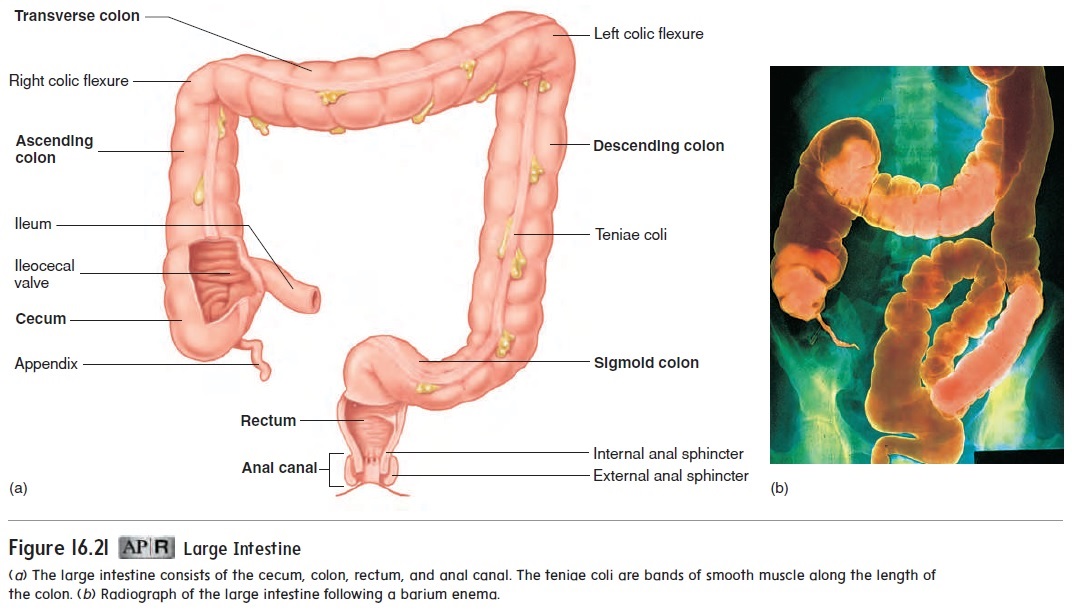Chapter: Essentials of Anatomy and Physiology: Digestive System
Functions of the Large Intestine
Functions Of The Large Intestine
Normally, 18–24 hours are required for material to pass through the large intestine, in contrast to the 3–5 hours required for chyme to move through the small intestine. While in the colon, chyme is converted to feces (fē′ sēz). The formation of feces involves the absorption of water and salts, the secretion of mucus, and exten-sive action of microorganisms. The colon stores the feces until they are eliminated by the process of defecation (def-ĕ-kā′ shŭn).
Numerous microorganisms inhabit the colon. They reproduce rapidly and ultimately constitute about 30% of the dry weight of the feces. Some bacteria in the intestine synthesize vitamin K and other vitamins, which are passively absorbed in the colon.
Every 8–12 hours, large parts of the colon undergo several strong contractions, called mass movements, which propel the colon contents a considerable distance toward the anus. Each mass movement contraction extends over 20 or more centimeters of the large intestine, which is a much longer part of the digestive tract than that covered by a peristaltic contraction. These mass movements are very common following some meals, especially breakfast.
Feces distend the rectal wall and stimulate the defecationreflex, which involves local and parasympathetic reflexes. Localreflexes cause weak contractions, whereas parasympathetic reflexes cause strong contractions and are normally responsible for most of the defecation reflex. Action potentials produced in response to the distention travel along sensory nerve fibers to the sacral region of the spinal cord, where motor action potentials are initiated that reinforce peristaltic contractions in the lower colon and the rectum. Action potentials from the spinal cord also cause the internal anal sphincter to relax. The external anal sphincter, which is composed of skeletal muscle and is under conscious cerebral control, prevents feces from moving out of the rectum and through the anal opening. If this sphincter is relaxed volun-tarily, feces are expelled. The defecation reflex persists for only a few minutes and quickly subsides. Generally, the reflex is reini-tiated after a period that may be as long as several hours. Mass movements in the colon are usually the reason for the reinitiation of the defecation reflex.
Defecation can be initiated by voluntary actions that stimulate a defecation reflex. These actions include a large inspiration of air, followed by closure of the larynx and forceful contraction of the abdominal muscles. As a consequence, the pressure in the abdomi-nal cavity increases and forces feces into the rectum. Stretch of the rectum initiates a defecation reflex. The increased abdominal pressure also helps push feces through the rectum.

Related Topics